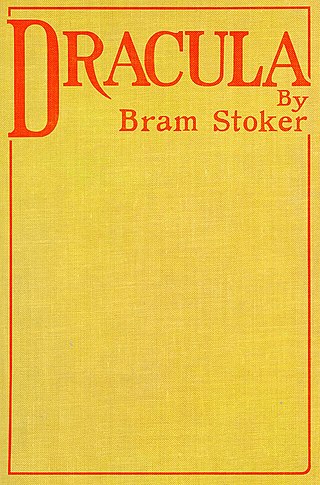
Dracula is a 1897 Gothic horror novel by Irish author Bram Stoker. An epistolary novel, the narrative is related through letters, diary entries, and newspaper articles. It has no single protagonist and opens with solicitor Jonathan Harker taking a business trip to stay at the castle of a Transylvanian nobleman, Count Dracula. Harker escapes the castle after discovering that Dracula is a vampire, and the Count moves to England and plagues the seaside town of Whitby. A small group, led by Abraham Van Helsing, investigate, hunt, and kill Dracula.

John Edward Masefield was an English poet and writer, and Poet Laureate from 1930 until his death in 1967. Among his best known works are the children's novels The Midnight Folk and The Box of Delights, and the poems "The Everlasting Mercy" and "Sea-Fever".

Long John Silver is a fictional character and the main antagonist in the 1883 novel Treasure Island by Robert Louis Stevenson. The most colourful and complex character in the book, he continues to appear in popular culture. His missing leg and parrot, in particular, have greatly contributed to the image of the pirate in popular culture.

The Bridge of San Luis Rey is American author Thornton Wilder's second novel. It was first published in 1927 to worldwide acclaim. The novel won the Pulitzer Prize in 1928, and was the best-selling work of fiction that year.

Galápagos (1985) is the eleventh novel published by American author Kurt Vonnegut. Set in the Galápagos Islands after a global financial disaster, the novel questions the merit of the human brain from an evolutionary perspective. The title is both a reference to the islands on which part of the story plays out, and a tribute to Charles Darwin, on whose theory Vonnegut relies to reach his own conclusions. It was published by Delacorte Press.
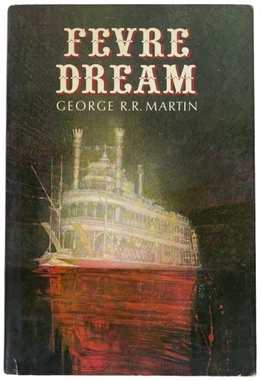
Fevre Dream is a 1982 vampire novel written by American author George R. R. Martin. It is set on the antebellum Mississippi River, beginning in 1857, and has been described by critics and Martin himself as "Bram Stoker meets Mark Twain". About writing the novel, Martin said that "It was strongly influenced by the time I spent in Dubuque, Iowa, where river steamboats were once built".

The Midnight Folk is a children's fantasy novel by John Masefield first published in 1927. It is about a boy, Kay Harker, who sets out to discover what became of a fortune stolen from his seafaring great grandfather Aston Tirrold Harker. The treasure is also sought by a coven of witches who are seeking it for their own ends. Kay's governess Sylvia Daisy Pouncer is a member of the coven. The witches are led or guided by the wizard Abner Brown.

The Box of Delights is a children's fantasy novel by John Masefield. It is a sequel to The Midnight Folk, and was first published in 1935. It is also known as When The Wolves Were Running.

100 Rifles is a 1969 American Western film directed by Tom Gries and starring Jim Brown, Raquel Welch and Burt Reynolds. It is based on Robert MacLeod's 1966 novel The Californio. The film was shot in Spain. The original music score was composed by Jerry Goldsmith, who had previously also scored Bandolero!, another Western starring Welch.
John Lawrence Collins Jr. was an American writer.
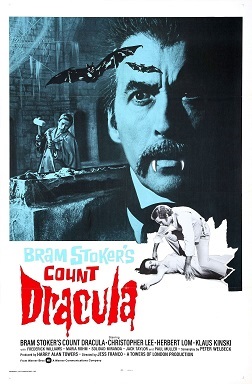
Count Dracula is a 1970 horror film directed and co-written by Jesús Franco, based on the novel Dracula by Bram Stoker. It stars Christopher Lee as Dracula, Herbert Lom as Van Helsing, and Klaus Kinski as Renfield, along with Fred Williams, Maria Rohm, Soledad Miranda, Paul Muller, and Jack Taylor.
René Paul Guillot was a French writer of children's books who lived, worked and travelled in French West Africa.

Kay Harker is a fictional character, the young hero of the books The Midnight Folk and The Box of Delights by John Masefield, and the BBC series of The Box of Delights. The series ran in 1984, where the character was played by actor Devin Stanfield. Kay is of an unspecified age, and the book follows his adventures one Christmas Holiday alongside his contemporaries who are staying for the holidays.
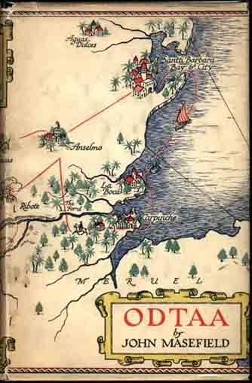
ODTAA (1926) by John Masefield is an adventure novel first published in February 1926. The letters in its title stand for "One Damn Thing After Another". It opens with establishing narrative describing the fictional nation of Santa Barbara, which "lies far to leeward of the Sugar States, is at the angle of the continent [of South America], with two coasts, one facing to the north, the other east. The city of Santa Barbara is in a bay at the angle where these two coasts trend one from each other."
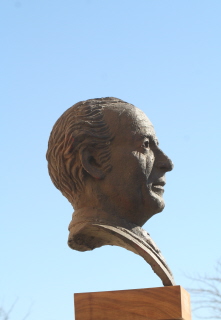
Antonio León Ortega was a Spanish sculptor known for his Andalusian imagery.

The Taking of the Gry is a novel by John Masefield published in 1934, and set in the fictional Central or South American state of Santa Barbara, also the setting for Sard Harker (1924), ODTAA (1926), and part of The Midnight Folk (1927). The action of the novel takes place in 1911, some time after Don Manuel, the benevolent dictator in Sard Harker, has died.
The New York Review Books Children's Collection is a series of children's books released under the publishing imprint New York Review Books. The series was founded in 2003 to reintroduce some of the many children's books that have fallen out of print, or simply out of mainstream attention. The series includes more than 80 titles, ranging from picture books to young adult novels. Often reissued with new introductions, writers such as Michael Chabon, Neil Gaiman, and Philip Pullman have all introduced titles in this series.
Rancho Huasna was a 22,153-acre (89.65 km2) Mexican land grant in present-day San Luis Obispo County, California given in 1843 by Governor Manuel Micheltorena to Isaac J. Sparks. The grant extended along the Huasna River and the western slope of the Santa Lucia Range, east of present-day Arroyo Grande and encompassing Huasna.
Harker is an English surname.

The Box of Delights is a BBC Television adaptation of John Masefield's 1935 children's fantasy novel The Box of Delights starring Devin Stanfield, Patrick Troughton and Robert Stephens. It was broadcast on BBC1 between 21 November and 24 December 1984. The series was adapted from Masefield's novel by Alan Seymour, directed by Renny Rye and produced by Paul Stone.















